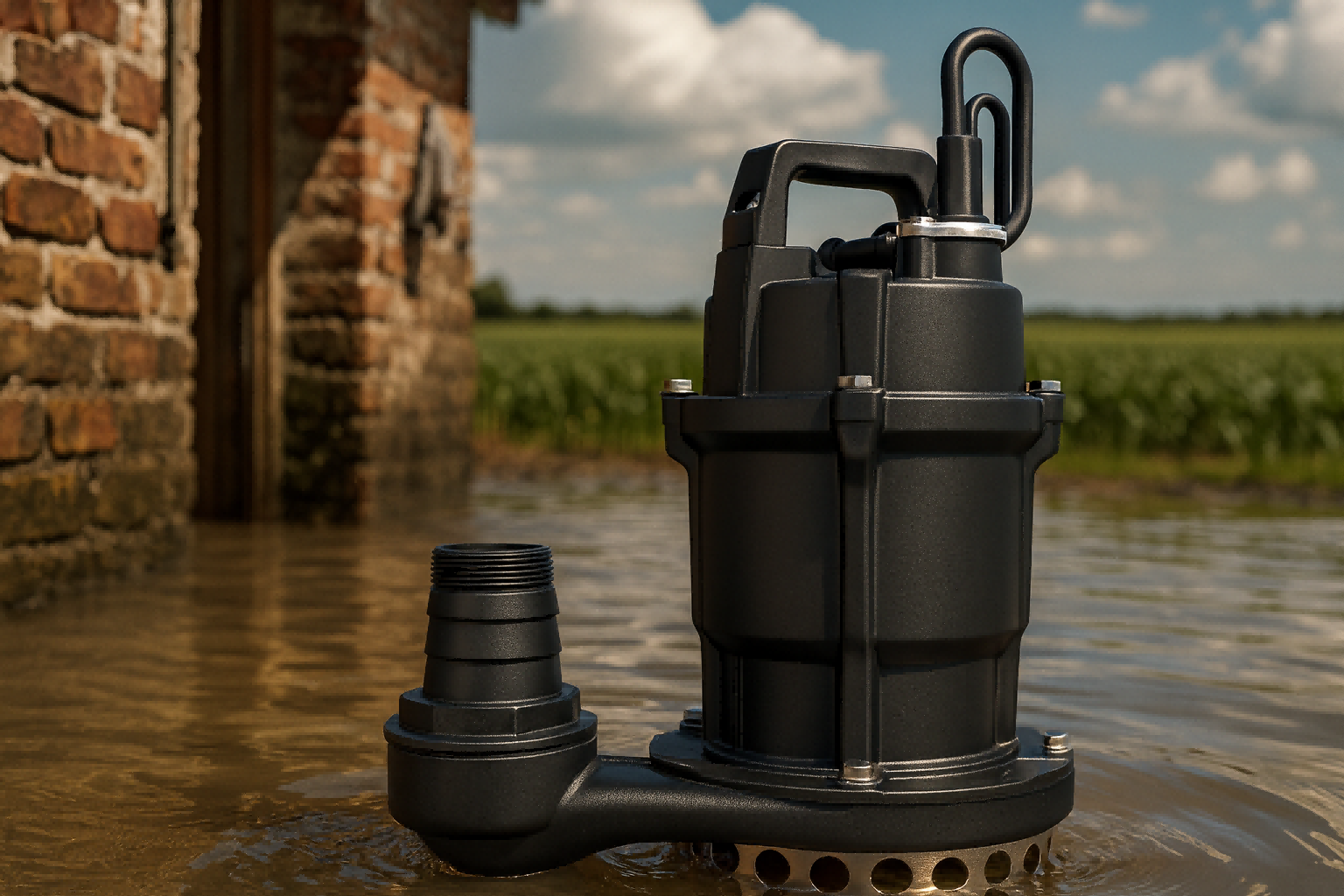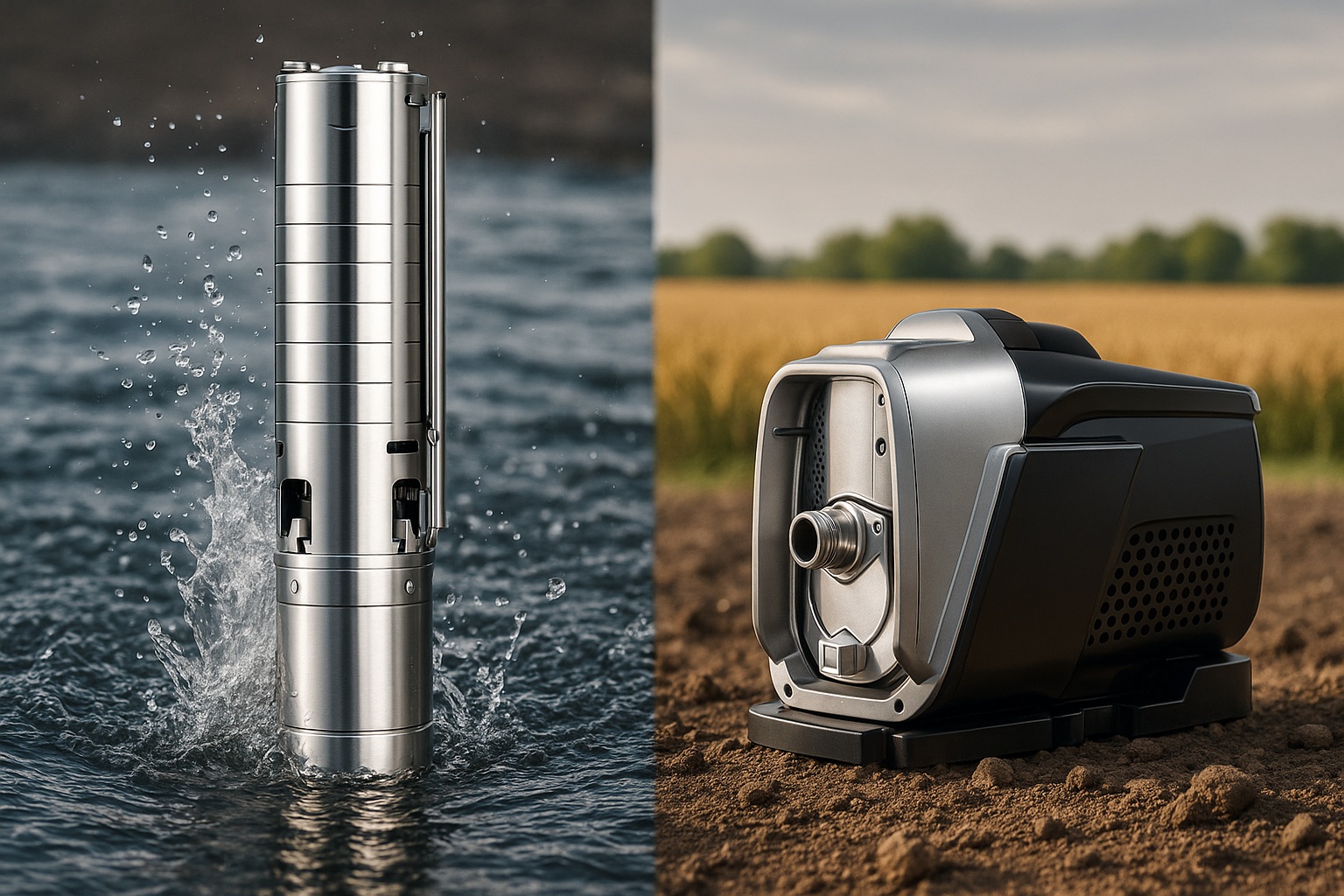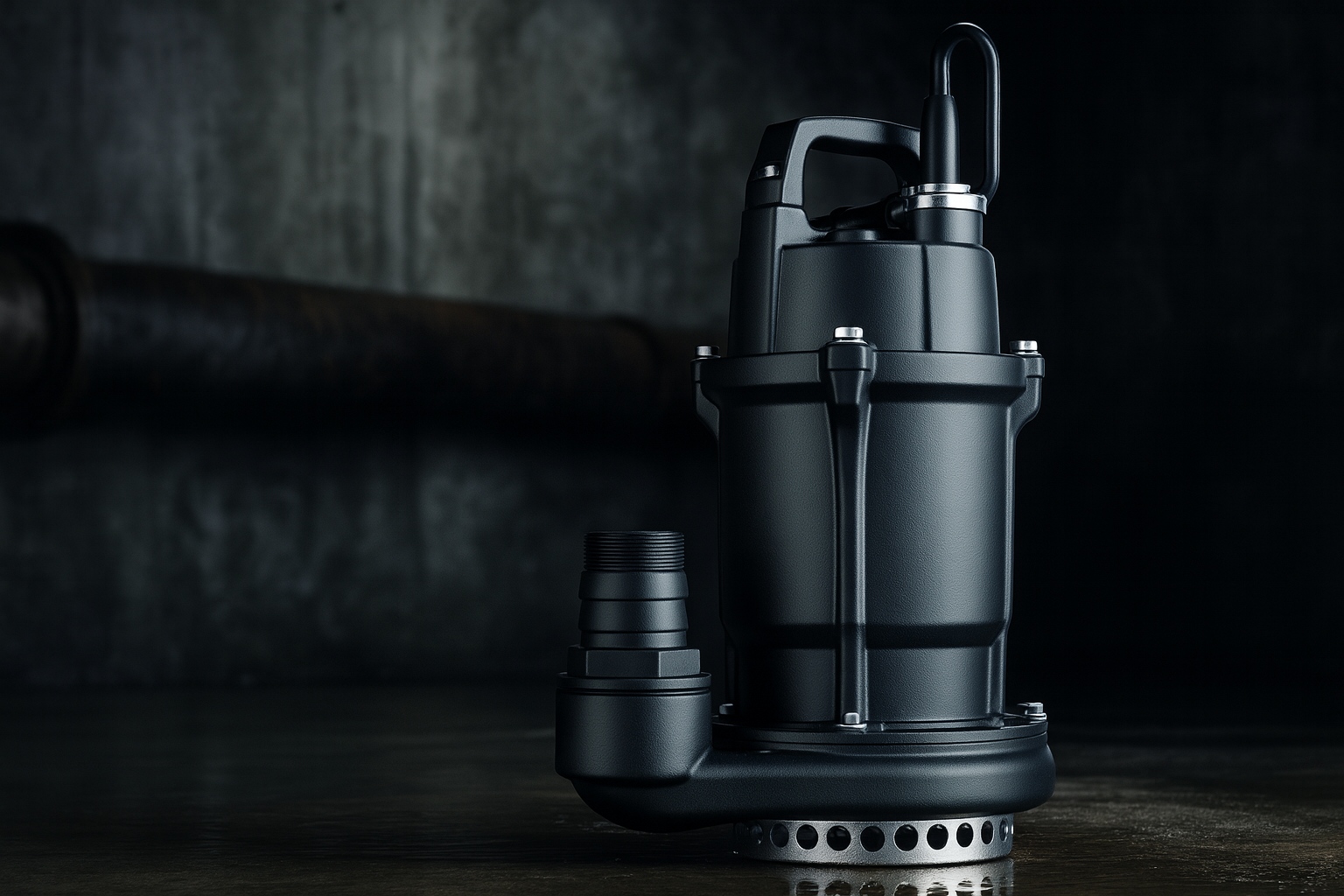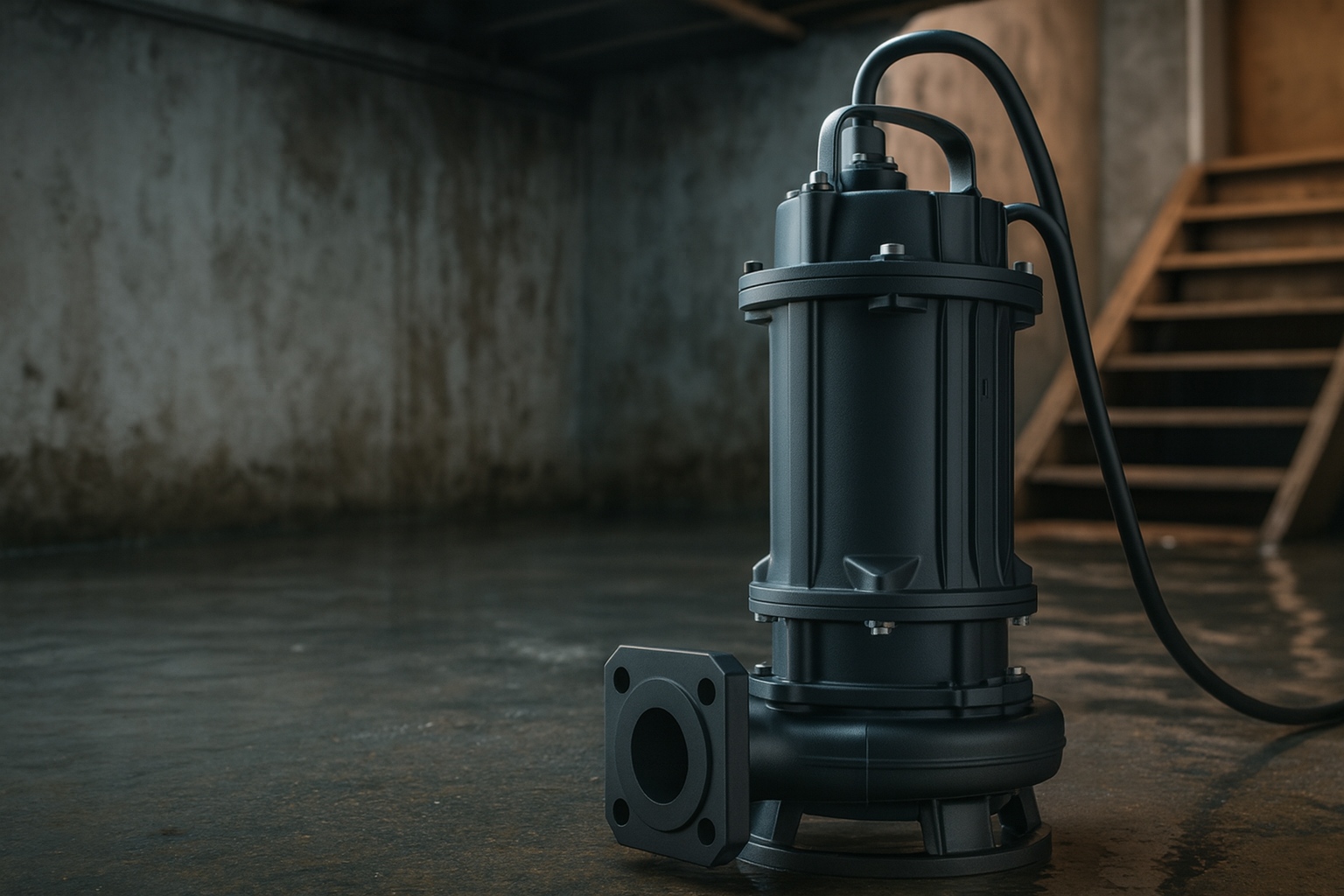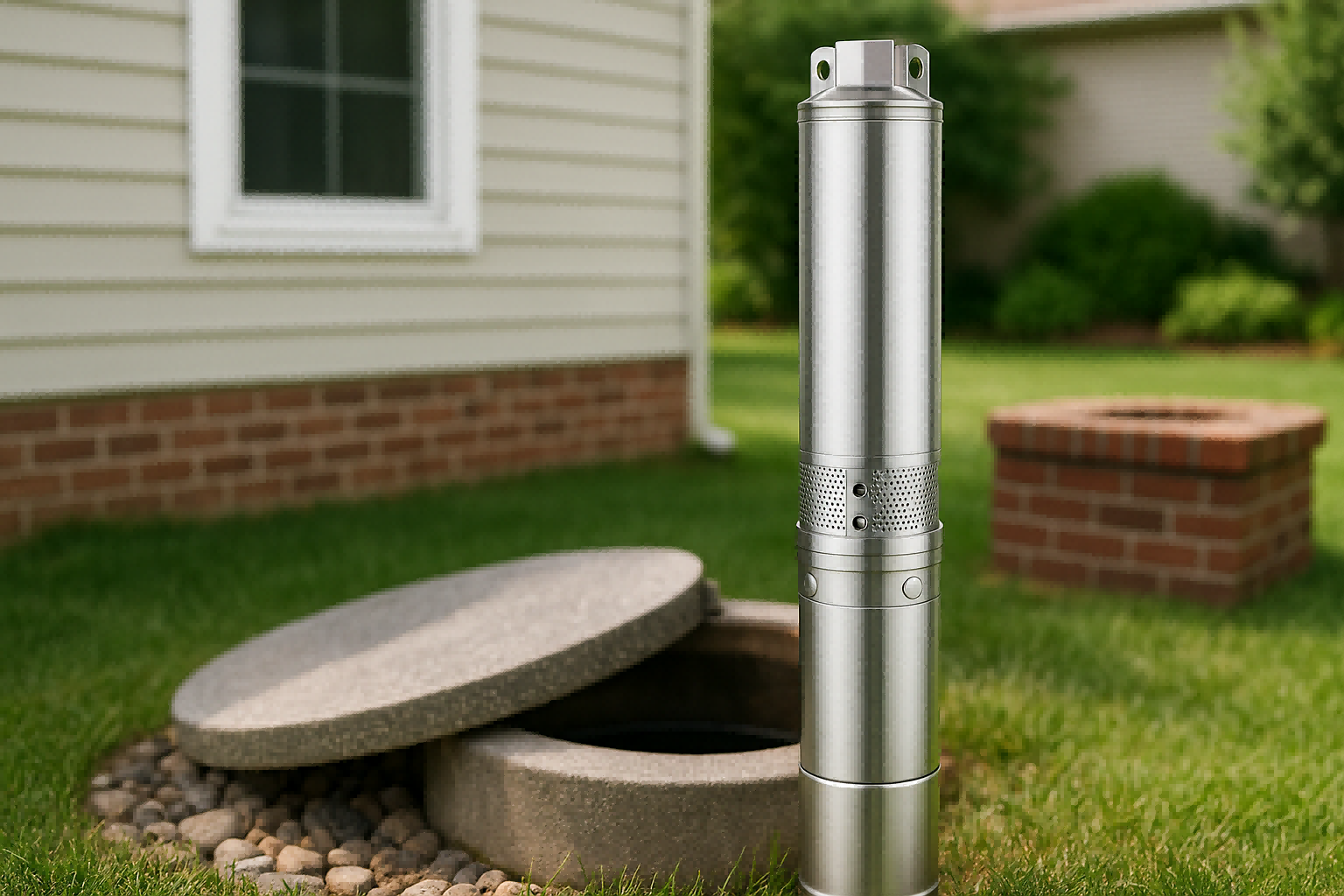Tired of suffering through weak showers and trickling faucets?
Low water pressure is a common frustration that can disrupt many daily household tasks.
A modern intelligent booster pump offers a permanent and powerful solution to this problem.
A Variable Frequency Drive (VFD) booster pump is often the best choice for increasing water pressure [^4].
It provides constant pressure, saves energy, and operates quietly by automatically adjusting its speed to meet your home's water demand.
This makes it the ideal upgrade for any modern residence.
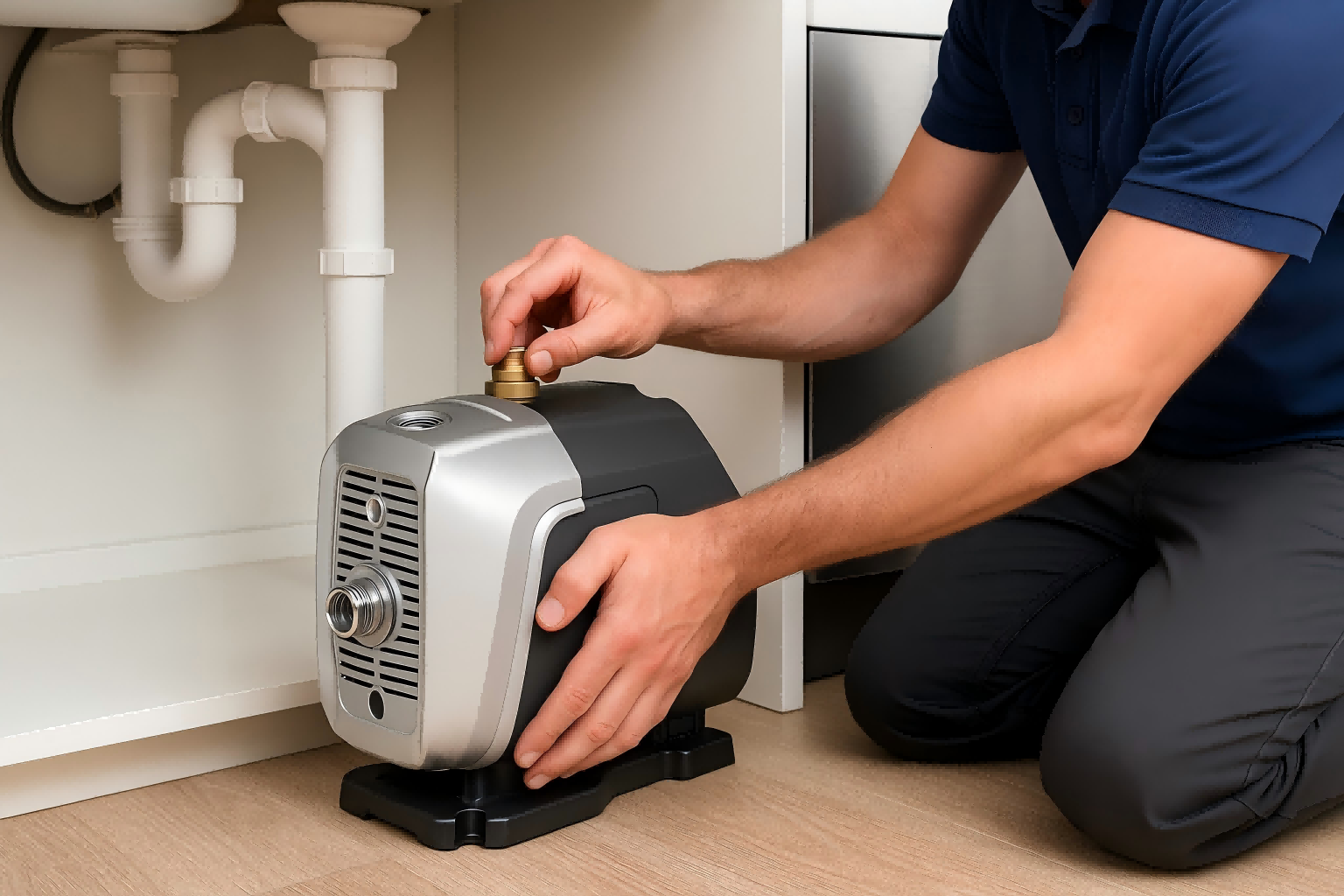
But what exactly makes this type of pump superior to traditional, fixed-speed models?
Choosing the right pump involves looking beyond simple horsepower ratings.
It requires an understanding of the technology that powers it and the features that make it reliable for years to come.
Let's explore the key components and intelligent features that define a top-tier booster pump.
This guide will help you make an informed decision for your home.
What Is a Variable Frequency Drive (VFD) Pump?
The term "Variable Frequency Drive" can sound technical and complex.
This technology might seem intimidating, but its benefits are straightforward and easy to understand.
Learning what a VFD does is the first step toward solving your water pressure problems permanently.
A VFD pump uses an intelligent controller to adjust the motor's speed in real-time.
Instead of running at full power all the time, it speeds up or slows down to perfectly match the amount of water you are using.
This process ensures constant pressure at every tap and saves a significant amount of energy [^4].
The Core of VFD: Smart Technology
At its heart, a VFD system is a smart technology designed for efficiency and comfort.
Traditional pumps are either on or off.
They run at 100% speed even if you only turn on a small faucet.
This is like pressing the gas pedal all the way to the floor every time you start your car, no matter how far you need to go.
A VFD, however, acts like an intelligent cruise control for your water system.
It senses the pressure in the pipes.
When you open a tap, the pressure drops slightly.
The VFD detects this change and tells the motor to speed up just enough to bring the pressure back to your desired level [^4].
When you turn the tap off, it slows the motor down or puts it to sleep.
Permanent Magnet Synchronous Motors (PMSM)
The most advanced VFD pumps are paired with a Permanent Magnet Synchronous Motor (PMSM).
This type of motor is far more efficient and quieter than the standard induction motors found in older pumps.
The use of powerful permanent magnets reduces energy loss within the motor.
This allows more of the electrical energy to be converted into pumping power.
This synergy between the VFD controller and the PMSM motor is what delivers truly exceptional performance.
Key Performance Benefits
The combination of a VFD controller and a high-efficiency motor provides several tangible benefits for homeowners.
These advantages go beyond just better water pressure and create a more pleasant and economical living environment.
| Benefit | Description |
|---|---|
| Constant Pressure | The pump maintains a steady, preset water pressure regardless of how many taps are open. This eliminates annoying pressure drops and temperature fluctuations in the shower [^5]. |
| Energy Savings | By running the motor only as fast as needed, a VFD pump can reduce electricity consumption significantly compared to a conventional pump. Over time, these savings can be substantial [^4]. |
| Quiet Operation | The soft start feature and the ability to run at lower speeds make these pumps incredibly quiet. You often won't even hear them running, which is a major advantage if the pump is installed inside your home. |
| Increased Longevity | The "soft start" and "soft stop" functions gradually ramp the motor speed up and down. This reduces mechanical stress on the pump's components and minimizes water hammer, extending the life of both the pump and your plumbing. |
Why Does Pump Construction Quality Matter?
Does your current water pump sound like a jet engine getting ready for takeoff?
Loud noise is often a sign of poor-quality components that wear out quickly.
Investing in a pump built with superior materials means better performance, less noise, and long-term peace of mind.
High-quality construction is critical for ensuring longevity, efficiency, and quiet operation.
You should look for pumps built with durable materials like stainless steel impellers, high-grade silicon steel in the motor, and premium, low-noise bearings.
These details are vital for preventing corrosion and extending the pump's service life.
The Impeller: The Heart of the Pump
The impeller is a rotating component with blades that pushes the water through the pump.
It is the single most important part for creating pressure and flow.
The material used for the impeller has a huge impact on the pump's durability.
Lower-quality pumps may use plastic or cast iron impellers.
These are susceptible to wear, corrosion, and damage from small debris in the water.
A superior choice is an impeller made from high-grade stainless steel, such as AISI 304.
This material offers excellent resistance to corrosion and abrasion, ensuring the pump maintains its performance for many years.
Motor Internals: What to Look For
The quality of a pump's motor is just as important as its hydraulic components.
A well-engineered motor runs more efficiently, cooler, and longer.
Key features to look for include:
- High-Grade Stator Steel: The stator is the stationary part of the motor. Using high-quality silicon steel reduces energy losses, improving overall motor efficiency.
- Superior Thermal Management: A motor that runs cooler will last longer. Look for designs that specify a low temperature rise, indicating that heat is managed effectively.
- High-Temperature Insulation: The wires inside the motor are coated with insulation. Class F or higher insulation provides high thermal resistance, protecting the motor even under demanding operating conditions.
Bearings: The Unsung Heroes of Quiet Operation
Bearings are small components that support the motor's rotating shaft.
The quality of these bearings has a massive effect on the pump's noise level and lifespan.
Standard bearings used in cheaper pumps can be noisy and may wear out prematurely.
High-end pumps use precision bearings from reputable manufacturers.
These premium bearings are designed for quieter operation and a significantly longer service life.
While it might seem like a small detail, the choice of bearings is a clear indicator of the manufacturer's commitment to overall quality.
How Do Modern Pumps Survive Harsh Conditions?
Water and electronics are a dangerous combination.
A pump's main control board is particularly vulnerable to moisture, humidity, and dust.
This vulnerability is a common and costly point of failure in many standard pump models.
The best modern pumps protect their sensitive electronics by completely sealing the main controller board (PCB) in a waterproof resin.
This industrial process, known as potting, creates an impenetrable barrier.
It guards the electronics against moisture, dust, and vibration, dramatically increasing the pump's reliability and lifespan.
The Challenge: Protecting Sensitive Electronics
A booster pump often operates in environments that are not ideal for electronics.
Basements, pump houses, and outdoor utility closets can be damp, humid, and dusty.
Over time, moisture can condense on the electronic components of the pump's control board.
This can lead to short circuits, corrosion, and eventual failure of the entire system.
Vibration from the pump's motor can also stress solder joints and connections, leading to intermittent faults.
Manufacturers have long sought a reliable way to solve this fundamental problem.
The Solution: PCB Potting Explained
Potting provides the ultimate solution for environmental protection.
During manufacturing, the entire printed circuit board, with all its sensitive components, is placed in a mold.
A liquid insulating compound, often a type of epoxy or polyurethane resin, is then poured over it.
The resin fills all the gaps and hardens, completely encapsulating the electronics in a solid, protective block.
This creates a perfect seal that physically isolates the electronics from the outside world.
Benefits of a Sealed Controller
This method of sealing the controller offers several critical advantages that contribute directly to a longer and more reliable service life for the pump.
Protecting the electronic "brain" of the pump is one of the most important design choices a manufacturer can make.
| Protection | Advantage |
|---|---|
| 100% Waterproof | A potted controller is completely impervious to moisture, condensation, and even temporary submersion. This effectively eliminates failures caused by water damage. |
| Dust and Debris Proof | The solid resin block prevents dust, insects, and other small debris from ever reaching the electronic components, preventing short circuits. |
| Vibration Resistance | The hardened resin provides mechanical support for all components, making them highly resistant to damage from motor vibration or external shocks. |
| Extended Lifespan | By shielding the electronics from all environmental threats, potting can extend the life of the controller by several years compared to an unsealed board. |
What Safety Features Protect Your Pump Investment?
What happens if your water source runs dry, a pipe leaks, or the power supply fluctuates?
A basic pump could quickly burn out its motor or suffer damage, leading to an expensive replacement.
An intelligent pump, however, is designed to protect itself from these common hazards.
A comprehensive suite of built-in, automated protection functions is an essential feature of any high-quality booster pump.
Look for features like dry-run protection, overheating shutdown, voltage fluctuation guards, and stall prevention.
These safety systems act as a 24/7 monitor for your pump, safeguarding your investment.
Electrical and Thermal Protections
A pump's motor and electronics are vulnerable to issues from the electrical supply and from the heat they generate.
A smart pump actively monitors these parameters and will shut itself down before damage can occur.
Essential electrical and thermal protections include:
- Over/Under Voltage Protection: Shuts the pump off if the incoming voltage is too high or too low, protecting the electronics.
- Overcurrent Protection: Prevents motor damage if the pump tries to draw too much electrical current.
- Overheating Protection: Monitors the temperature of both the motor and the control board, shutting down the system to cool off if it gets too hot.
- Phase Loss Protection: A key feature for pumps running on a three-phase power supply.
System and Operational Protections
Beyond electrical issues, a pump needs to be aware of the conditions within the water system itself.
Intelligent protections can detect problems like a lack of water or a leak in the pipes.
- Antifreeze Protection: In cold climates, the pump can automatically run itself for brief periods to prevent water inside it from freezing and causing damage.
- Pipeline Leak Warning: Some advanced systems can detect a very small, continuous flow consistent with a leak in your home's plumbing and alert you to the problem.
The Importance of Dry-Run Protection
The most critical operational safety feature is dry-run protection.
Running a pump without water can destroy its mechanical seal within seconds, leading to a catastrophic failure.
A smart pump uses sensors to detect when there is no water available.
When it detects a dry-run situation, it doesn't just shut off.
It enters an intelligent recovery mode.
For example, it might try to restart after a few minutes to see if water has returned.
If water is still unavailable, it will wait for a longer period, such as an hour, before trying again.
This automated, multi-stage process prevents pump damage while ensuring water supply is restored automatically as soon as the source is available, all without any manual intervention.
How Can You Monitor and Control Your Water Pressure?
Are you tired of dealing with complicated controls and having to guess what your water pump is doing?
Managing your home's water pressure shouldn't require an engineering degree or a dense instruction manual.
A confusing or non-existent user interface can be a major source of frustration for homeowners.
An ideal booster pump should feature a user-friendly interface with a clear digital display and simple, intuitive buttons.
This allows for effortless pressure adjustment and provides access to real-time monitoring of key performance data.
Knowing what your pump is doing gives you control and peace of mind.
Designing an Intuitive User Interface
Complexity is the enemy of a good user experience.
The best pump interfaces are designed for simplicity.
Key operations should be straightforward and easy to remember.
- Power Control: A simple on/off button should be clearly marked.
- Pressure Adjustment: Dedicated "Up" and "Down" buttons allow you to set your desired water pressure with precision. You can increase it for a more powerful shower or decrease it to conserve water.
- Easy Reset: A simple function, like holding the power button for a few seconds, should be available to reset the pump to its factory settings if needed.
A system with just a few buttons can provide complete control without being intimidating for the average user.
Real-Time Data at Your Fingertips
While simple control is important, having access to real-time operational data is invaluable for understanding your system's performance.
Advanced pumps allow you to cycle through a display of live feedback from the pump's internal sensors.
This can include:
- Water Temperature
- Real-time Power Consumption (Watts)
- Motor Speed (RPM)
- Input Voltage
- Control Board Temperature
This information is not just for technicians.
It allows a curious homeowner to see how much energy the pump is using or check if the incoming voltage is stable.
Understanding LED Status Indicators
In addition to a digital display, a set of simple LED indicator lights can provide an at-a-glance status update.
These lights can instantly tell you what the pump is doing and alert you to any potential issues that may need your attention.
| LED Indicator | Meaning |
|---|---|
| Constant Pressure | Lit when the pump is actively running and maintaining the set pressure. |
| Pipeline Leakage | Flashes to warn you that the system has detected a potential leak in your plumbing. |
| Voltage Fault | Indicates that the input voltage is either too high or too low for safe operation. |
| Water Shortage | Alerts you that the pump has stopped due to a lack of water from the source (dry-running). |
| Power Level | A series of lights may indicate the current power output of the pump, showing you how hard it is working. |
Conclusion
In summary, a VFD booster pump with high-quality construction, sealed electronics, and comprehensive safety features offers the best solution for increasing and maintaining water pressure effectively and efficiently [^5].
FAQs
What PSI should my house water pressure be?
Ideal residential water pressure is between 45 and 55 PSI. Pressures above 60 PSI can damage plumbing fixtures and appliances over time.
Can a booster pump be too powerful?
Yes. An oversized pump can create excessively high pressure, leading to leaks, water hammer, and unnecessary stress on your pipes and appliances.
Where is the best place to install a water booster pump?
Install the pump on the main water line just after it enters the house, but before it splits to feed different areas or appliances.
Do water booster pumps use a lot of electricity?
Modern VFD booster pumps are very energy-efficient. They only use the electricity needed to maintain pressure, saving up to 50% compared to older models [^4].
How long do water booster pumps last?
A high-quality, well-maintained booster pump can last for 10 to 15 years. Longevity depends on construction quality, usage, and water conditions.
Can I install a water booster pump myself?
While possible for those with advanced plumbing and electrical skills, professional installation is recommended to ensure safety, proper setup, and compliance with local codes.
Will a booster pump fix a water hammer?
A VFD pump with a soft-start feature can help reduce water hammer. However, a severe water hammer problem may require a separate pressure-absorbing device.


